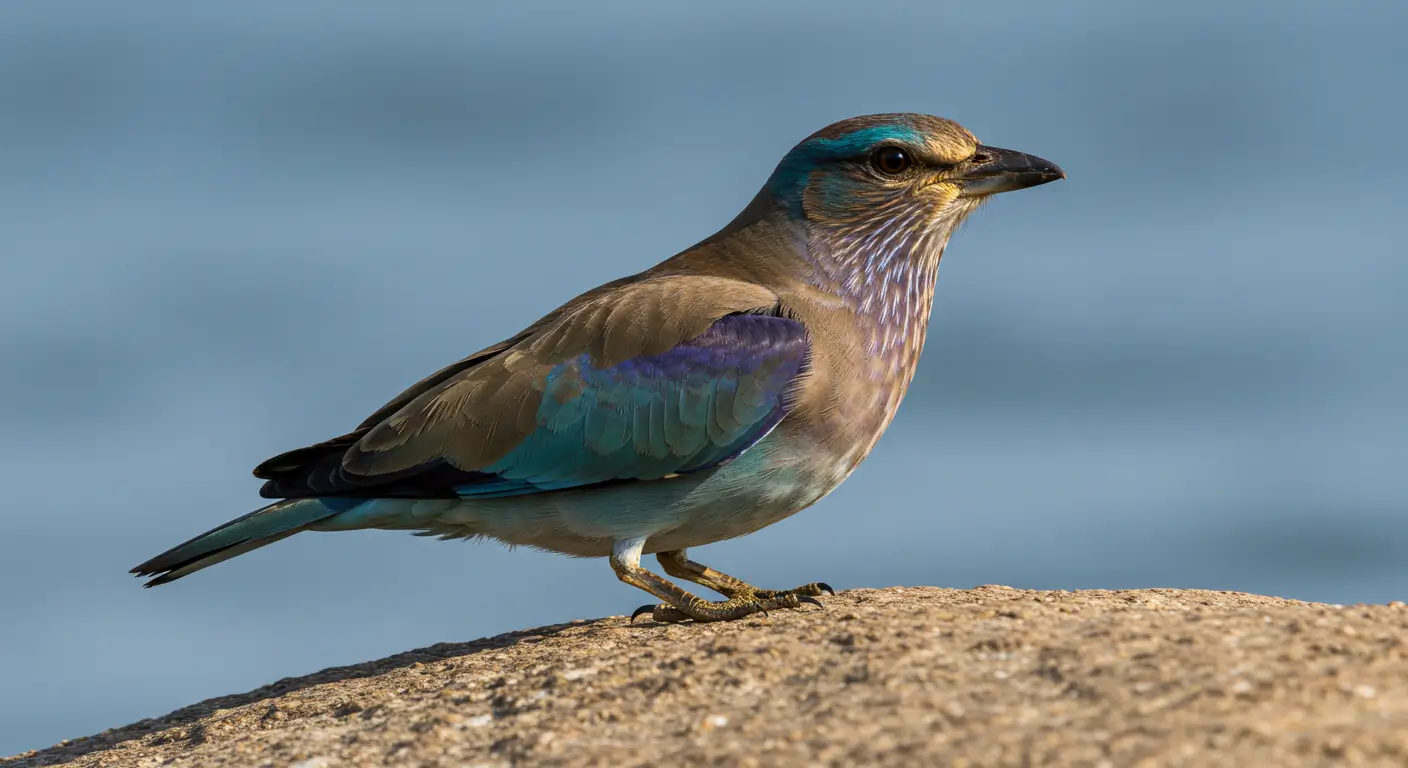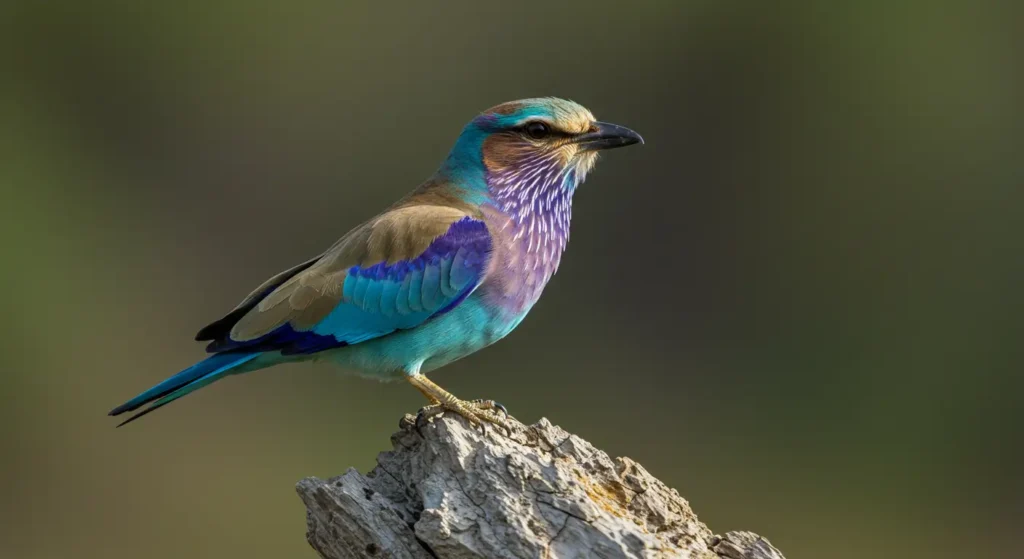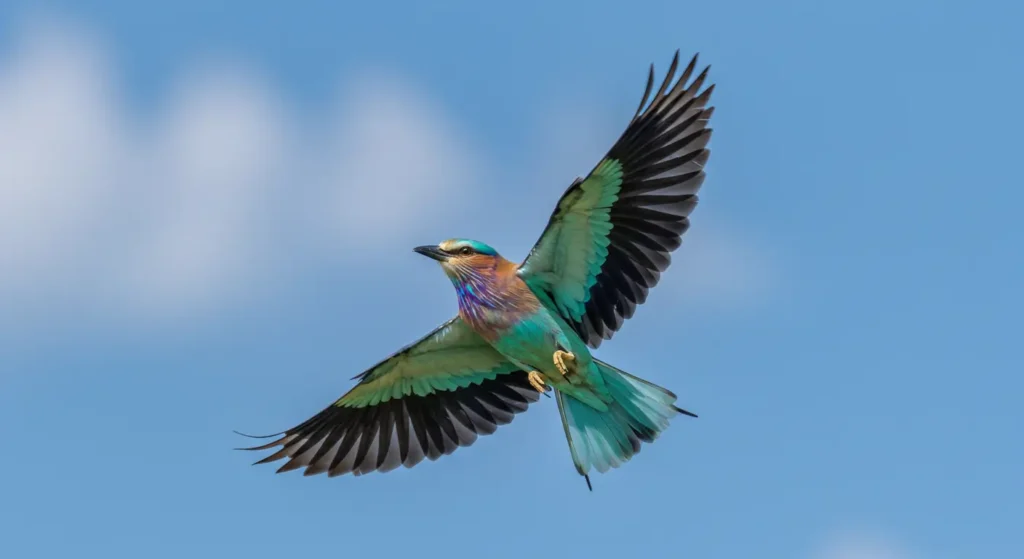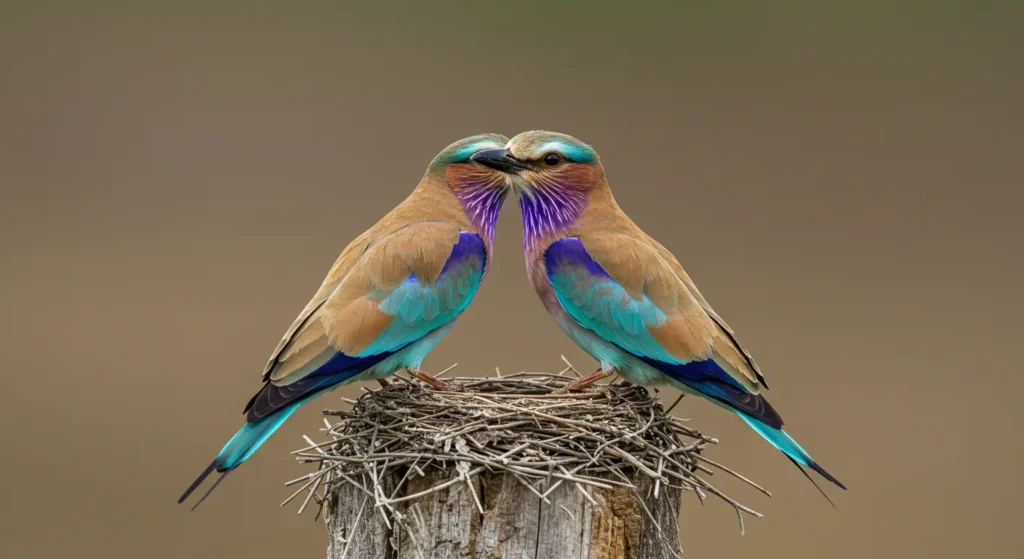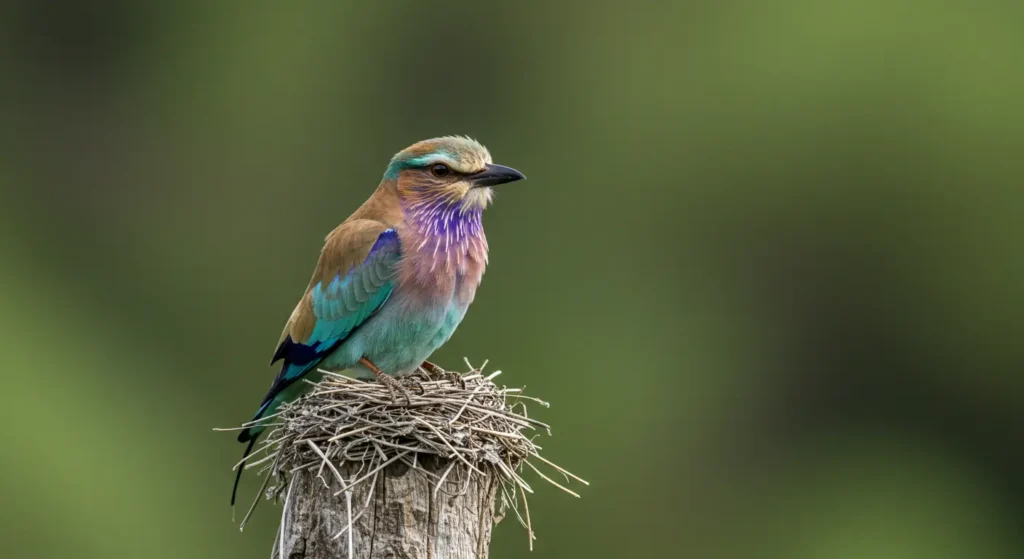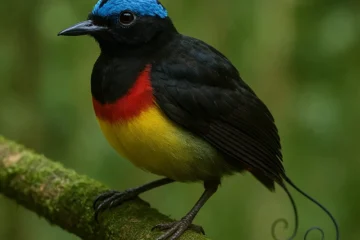The European Roller is a colorful bird known for its bright blue and rusty-brown feathers. It spends summers in Europe and migrates to Africa during winter. It mainly feeds on large insects, like beetles and grasshoppers. The bird nests in tree holes or old woodpecker cavities.
Males perform impressive dives and rolls during courtship. It’s part of the roller family and hence named for these rolling flight displays. It’s a favorite bird among birdwatchers worldwide for its bold colors and unique behavior.
Images of European Roller
Price of European Roller
A European Roller typically costs between $1,000 and $2,500 depending on age, health, and breeder. This bird is rare in the USA and this makes it more expensive than common pet birds.
General Characteristics of European Roller
European Roller is a very unique and must seen bird because of its interesting features. Here are some general characteristics of this bird which makes it different from others:
| General Characteristic | Feature Specific to European Roller |
| Scientific Name | Coracias garrulus |
| Color | Bright blue body with cinnamon-brown wings |
| Size | About 11 inches (28 cm) in length |
| Wingspan | Around 20–24 inches (50–58 cm) wide |
| Weight | Typically 160–175 grams |
| Beak Type | Strong, black, slightly hooked |
| Diet | Eats insects, small reptiles, and frogs |
| Habitat | Open countryside with scattered trees |
| Voice | Harsh and crow-like calls |
| Flying Style | Fast and direct flight with strong wingbeats |
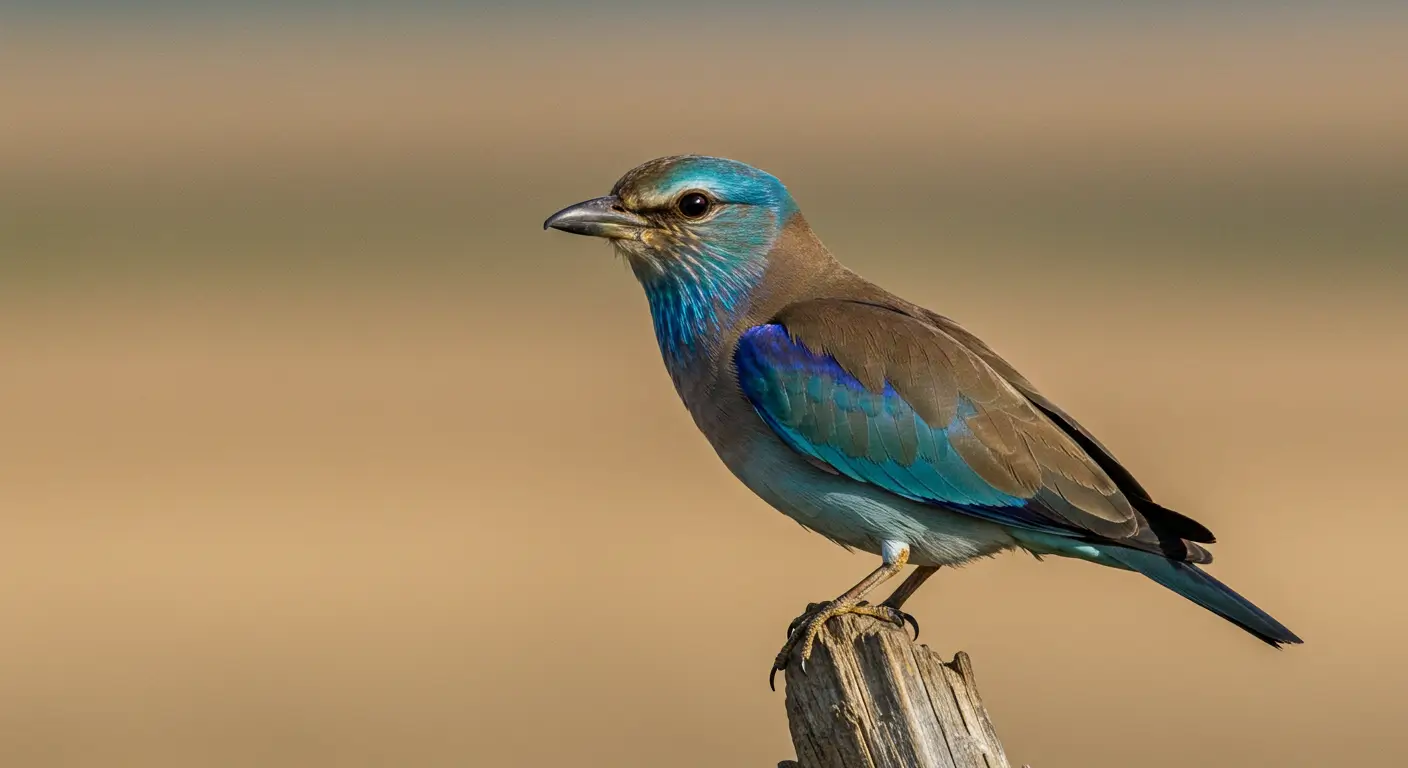
Life Span of European Roller
European Rollers live around 9–10 years in the wild. Their lifespan can reach up to 15 years with proper care in captivity.
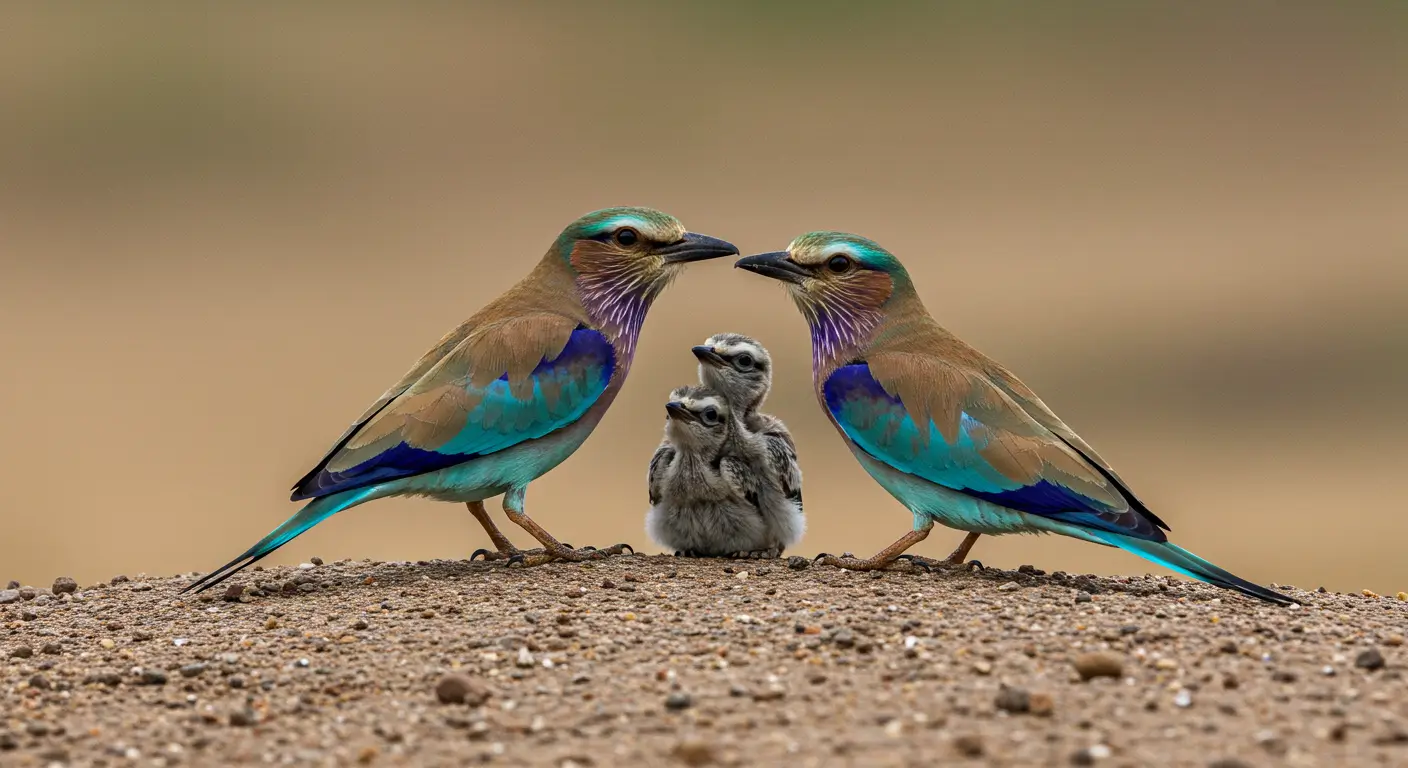
Interesting Facts About the European Roller
Here are certain interesting facts related to European Roller which can capture the interest of visitors who come to see the birds:
1. Blue Feathers with Bronze Wings
The European Roller’s bright blue color isn’t just common blue. Its feathers blend with turquoise and sky blue tones. The feathers are a mix of bronze-brown on its back and wings.
This blend creates a glossy and almost metallic look. The birdwatchers often compare it to a blend of a blue jay and a kingfisher. Its colors help it stand out during flight and mating displays.
2. Performs Acrobatics During Courtship
The European Roller shows off with aerial flips and dives during mating season. These stunts look like something you’d see in an air show. Males perform barrel rolls and high-speed dives to impress females.
This courtship dance happens mostly in the early morning. It’s one of the few birds to combine acrobatics and vocal calls in the same display.
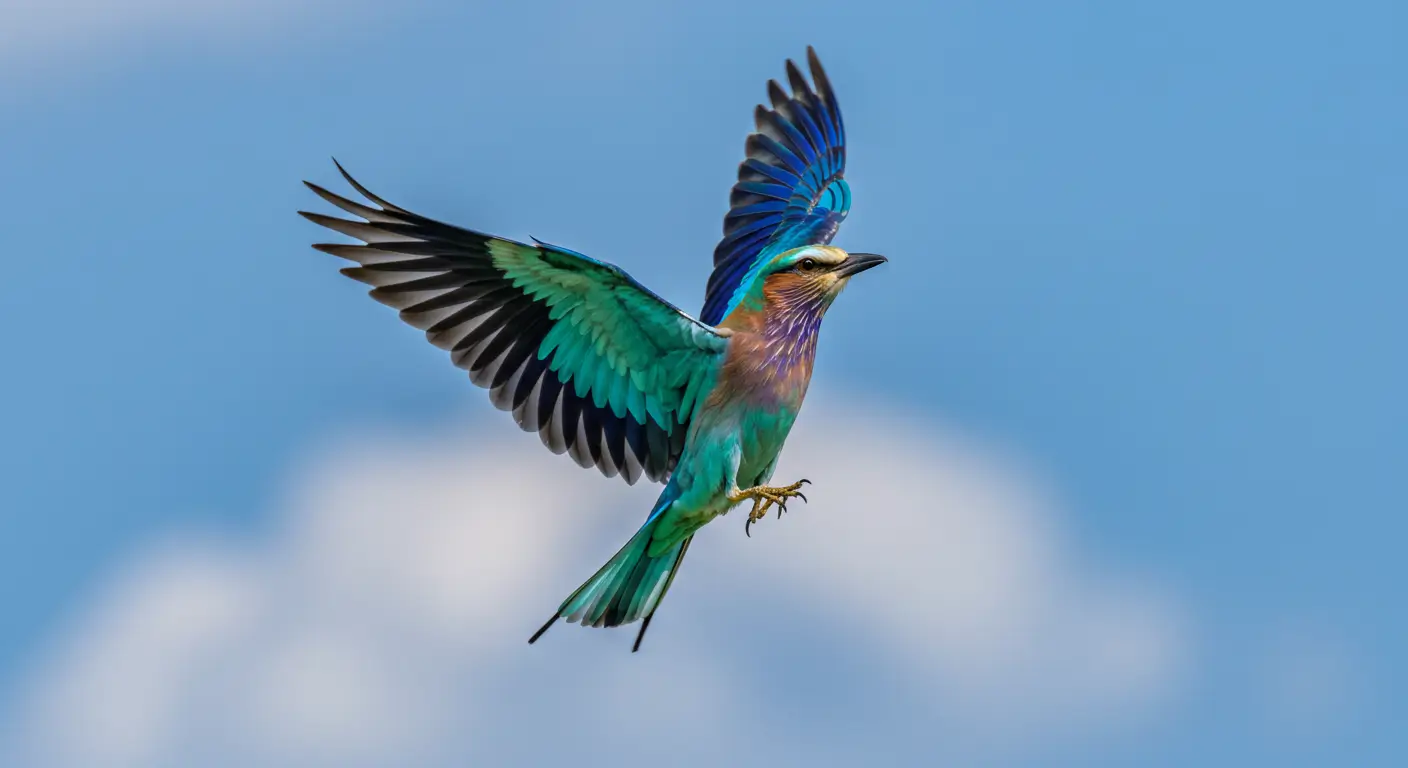
3. Only Roller Species in Europe
The European Roller is the only representative of the roller family (Coraciidae) found in Europe. This bird holds a unique spot in European biodiversity.
This uniqueness adds to its ecological value. Its alone presence in Europe makes it a conservation priority there.
4. Migrates Over 6,000 Miles Each Year
European Rollers migrate from Europe to southern Africa and back each year. This journey can stretch over 6,000 miles round trip. They fly through the Middle East and across the Sahara Desert.
This distance is extreme when compared to other migratory birds. The bird relies on stopover points to rest and hunt before continuing the trip.
5. Feeds on Large Prey for Its Size
The European Roller eats large insects, small reptiles, frogs, and even rodents. It watches from a peak and drops down quickly to catch prey. It often hunts grasshoppers, beetles, and lizards.
This hunting style is more like a hawk than a typical songbird. This predator-like behavior is quite unusual for its appearance.
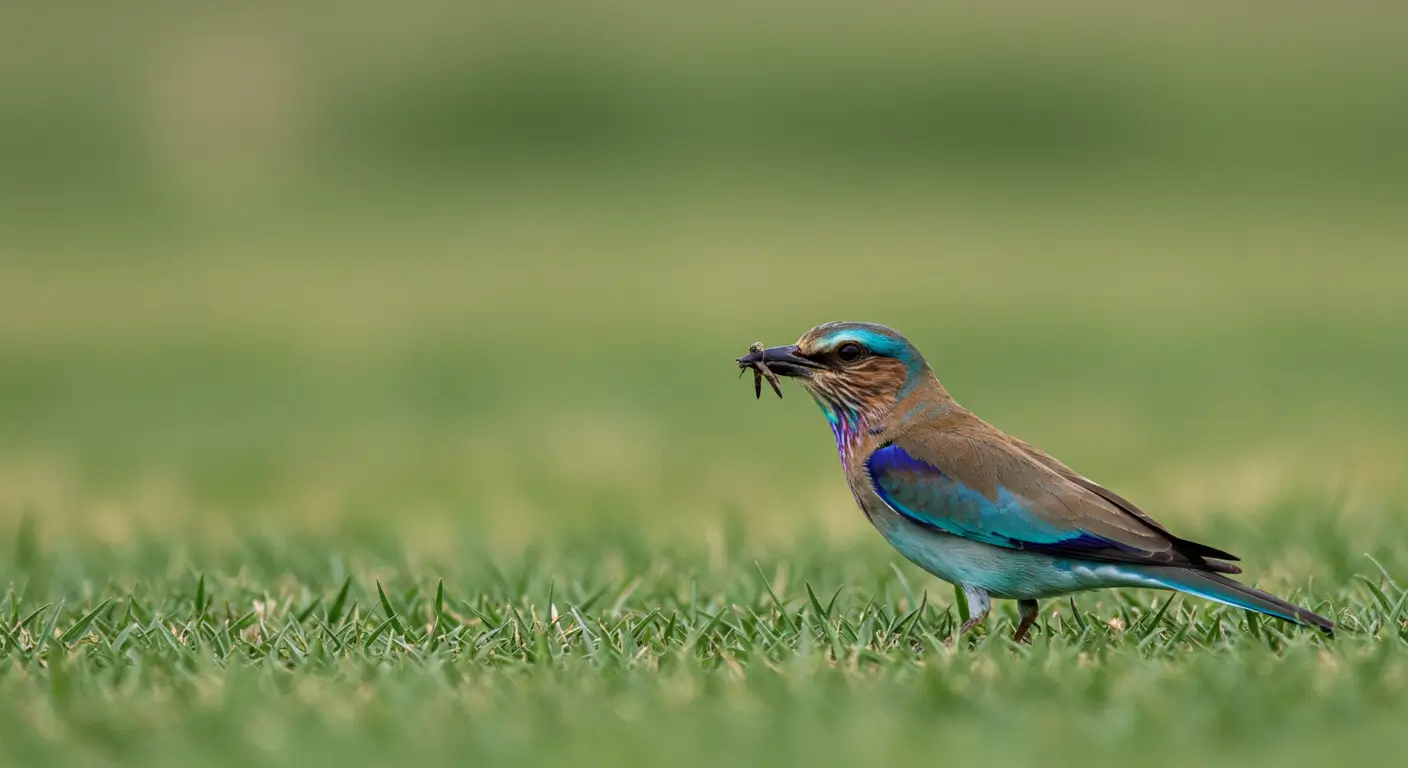
6. Different Nesting Habits
European Rollers don’t build open nests. They prefer to nest inside cavities like old woodpecker holes or abandoned structures. They can’t dig their own holes unlike woodpeckers.
Some birds nest in churches, barns, and utility poles. This adaptability to human-made structures is similar to American kestrels in rural areas. They rarely use leafy trees or shrubs for nesting.
7. Both Parents Feed the Young Equally
One parent (often the mother) takes the lead in raising chicks in many bird species. Both the male and female feed the chicks equally in case of European Rollers. They take turns hunting and delivering food.
This shared effort helps the chicks grow faster and healthier. It’s a sign of their strong pair bonds. This is a notable trait for bird behavioral researchers.
8. Releases a Foul Smell When Threatened
European Roller chicks can vomit a foul-smelling orange liquid to protect themselves and their nest. This surprises predators and makes them back off.
It’s a defense method not seen in many other bird species. This chemical reaction also alerts the parents that danger is near. It’s one of nature’s more unusual survival tricks.
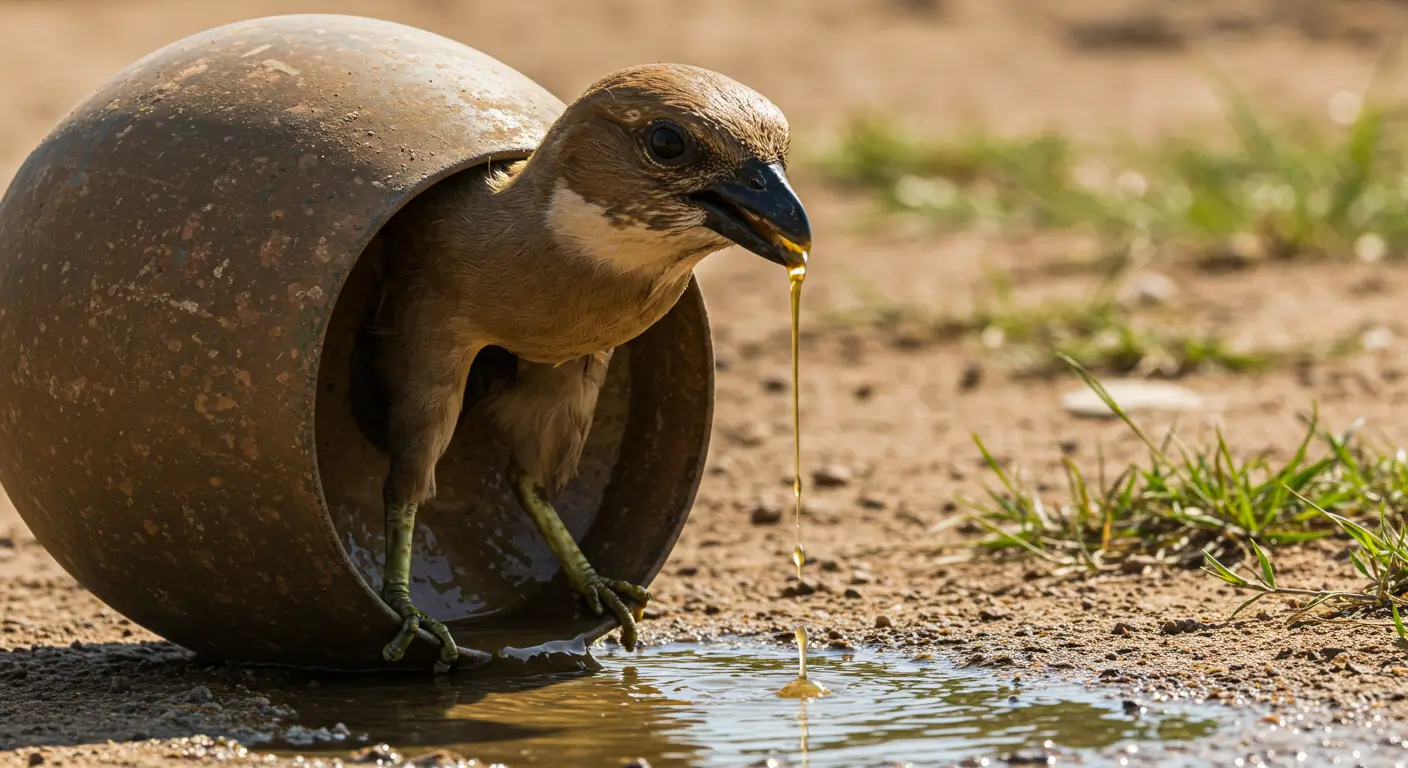
9. Short Breeding Window
Rollers only breed for a short time in late spring and early summer. This period usually lasts from May to July. The timing makes sure that insects population are at their peak. This offers easy food for chicks.
The narrow timespan helps them stay in sync with their environment. It’s different from other birds like cardinals or robins that can breed multiple times a year.
10. Returns to Same Nest Every Year
If a Roller finds a good nest spot then it often comes back to it each year. This site loyalty is strong and passed down through generations. Some nest cavities have been used for over a decade.
It’s similar to purple martins in North America. This behavior supports conservationists in installing nest boxes in targeted areas.
11. Makes Harsh Calls
The European Roller doesn’t sing melodies like thrushes or sparrows. It makes harsh and crow-like calls. These sounds are usually short, loud, and raspy.
The call is often described as a repeated “rak-rak-rak.” The noise is more functional than musical and is mainly used for warning or contact.
12. Prefers Open Fields and Farmland
The European Roller prefers open habitats like grasslands, meadows, and farmland. It needs clear sight lines to spot and catch prey. This preference matches that of species like meadowlarks or kestrels.
The U.S. Rollers avoid thick woods which makes them easy to observe in the right setting. They often settle on fences or poles.
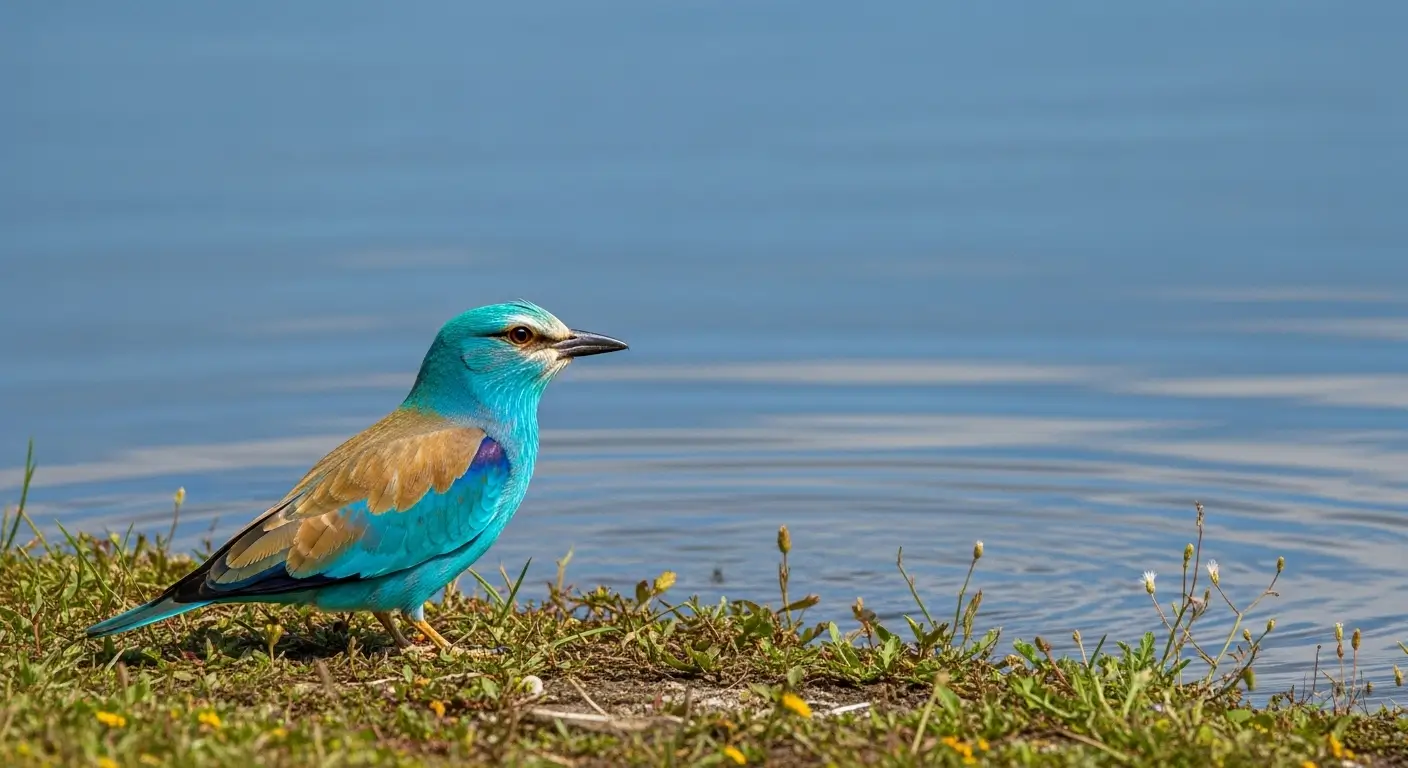
Sightseeing of European Roller
These birds are quite frequently seen in regions where most migratory birds pass and follow their route. Here are the most common places where these birds can be seen:
| Location | State in Which it is Located |
| Fairbanks | Alaska |
| Gambell (St. Lawrence Island) | Alaska |
| Nome | Alaska |
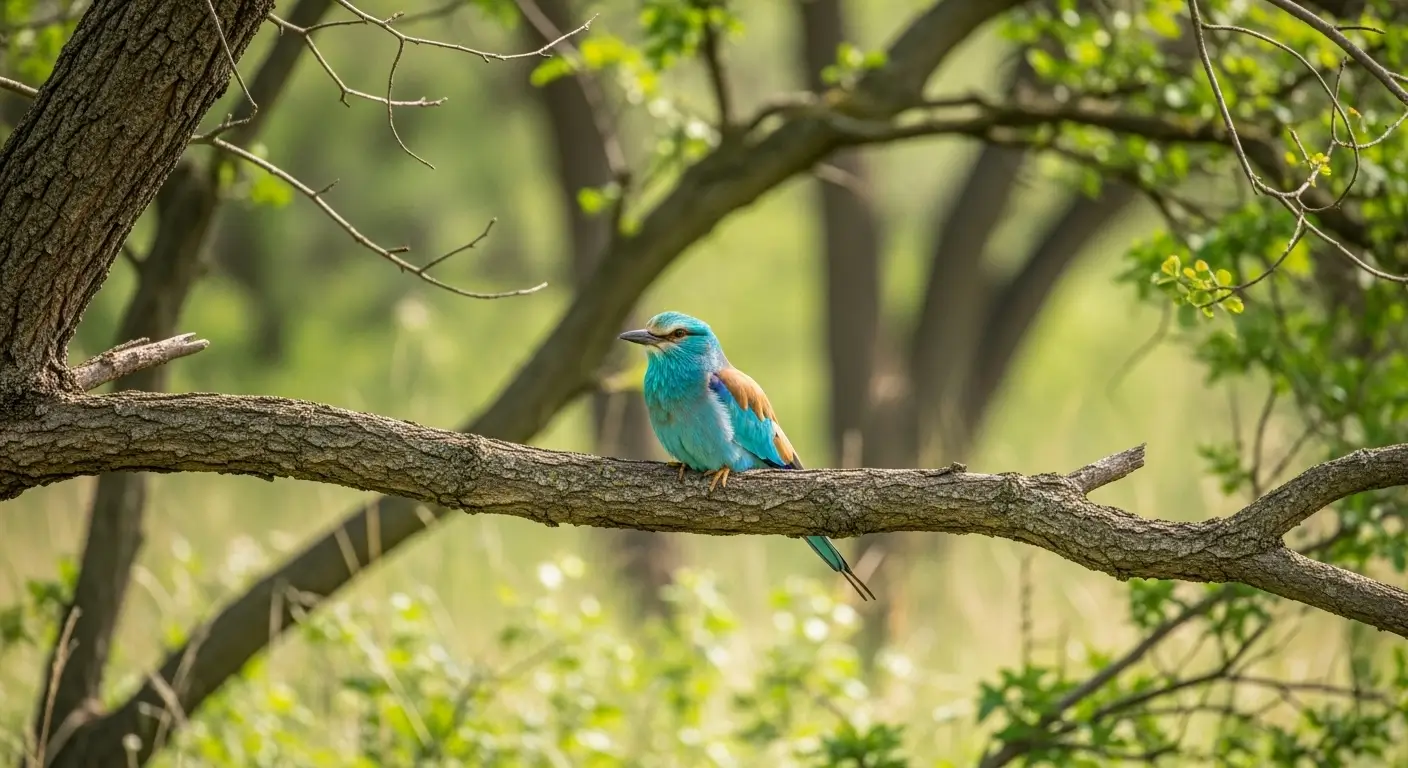
Photography Tips to Get Good Clicks of European Rollers
Here are certain tips to get good clicks of these amazing birds roamig around in nature:
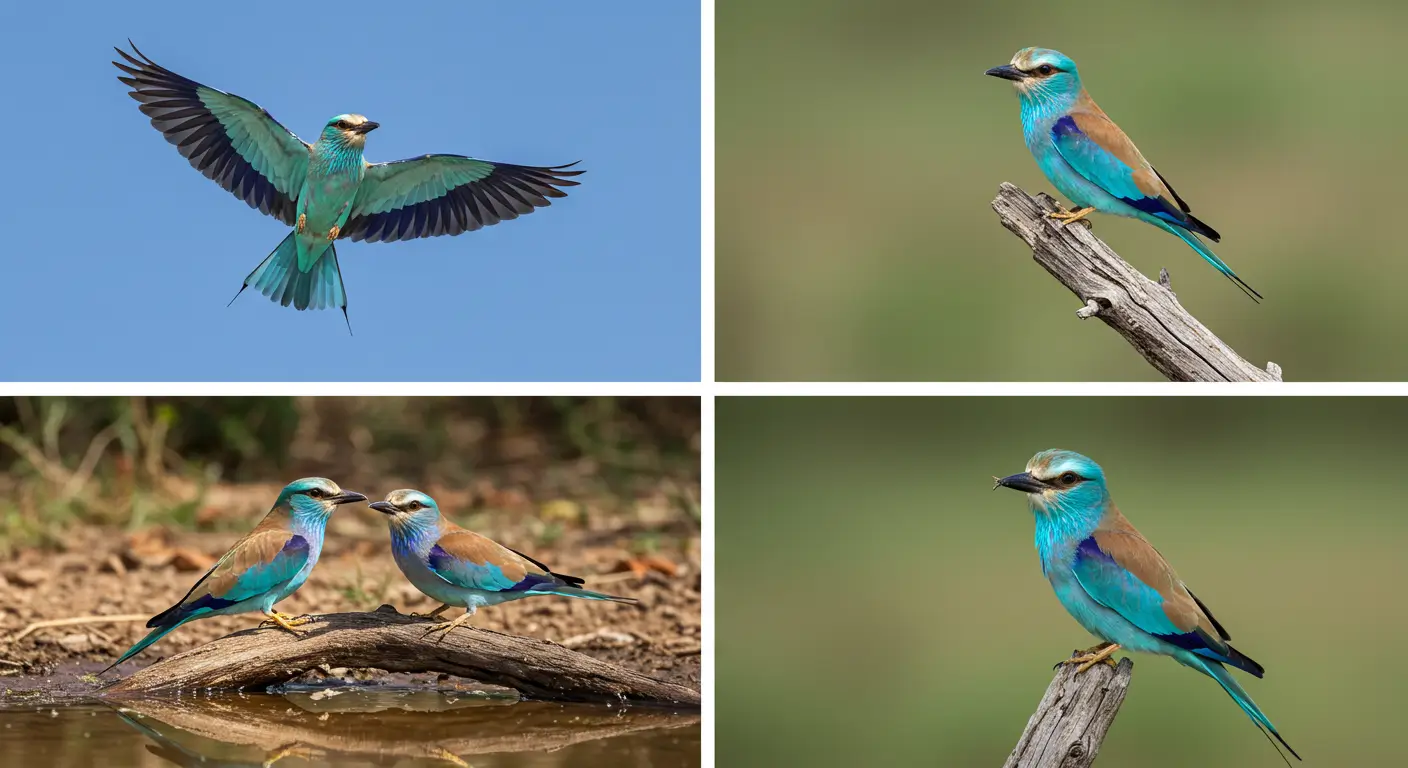
-
Wait for early morning or late afternoon light to catch the roller’s bright blues at their best.
-
Use a telephoto lens (at least 400mm) to get close without disturbing the bird.
-
Stay still and quiet near open fields or wooded edges where they hunt.
-
Focus on the bird’s eyes to keep the shot sharp and expressive.
-
Use natural perches like old fences or branches to add rustic feel to your frame.
Final Remarks
European Roller exhibit multiple features which are quite different from other birds of same category including diet preference, nesting habits, and breeding behaviour. These birds are native to europe and are not seen frequently in the USA. European Rollers are rare species and they provide a decent contribution to increased biodiversity.
FAQs
1. Can you see European Rollers in the USA?
No, European Rollers are not native to the USA and are extremely rare to spot in North America.
2. What does a European Roller look like?
It has bright blue feathers with brownish-orange on its back and strong black wingtips.
3. What do European Rollers eat?
They eat large insects, small reptiles, and sometimes rodents or frogs.
4. Are European Rollers endangered?
Yes, their population is declining due to habitat loss and hunting, especially along migration routes.
